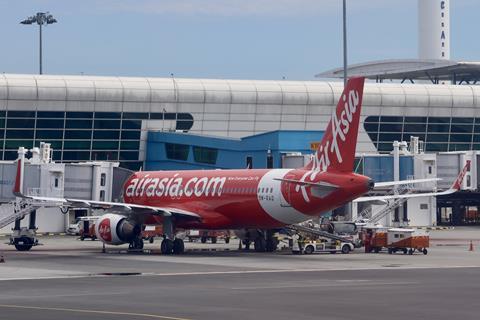AirAsia Aviation has postponed its forecast of a full fleet recovery, putting a roadblock in efforts to fully restore pre-pandemic capacity amid an uptick in travel demand.
In presentation slides accompanying the release of its third-quarter results, AirAsia says its expects 187 aircraft to be reactivated by the end of 2023.

Of these, only 161 will be in operation, bringing capacity, bringing systemwide capacity to around 74% of pre-pandemic levels, the low-cost airline business of Malaysia-based Capital A says.
In contrast, Capital A had previously indicated plans to fully restore the fleet by end-2023, with its most recent disclosure on 13 September.
While Capital A did not disclose the reasons for the delay, the airline has on several occasions said a lack of MRO slots – as well as supply chain challenges – were causing a bottleneck in returning aircraft to service.
According to Capital A chief Tony Fernandes, the airline group is likely to only restore its full operational fleet of over 200 Airbus jets in 2024. Says Fernandes: “Looking ahead to 2024, we project a significant upswing. With the absence of one-off costs, and the reactivation of our full fleet, coupled with the restoration of frequencies, we are strategically poised for a more resilient performance.”
AirAsia will “continue to pursue” its Southeast Asia expansion “agenda”, with the imminent launch of a new unit in Cambodia.
Separately, Capital A also expects all lease liabilities to be restructured by the end of this year. So far, it notes that GE Aviation and Airbus have already restructured its lease liabilities with the group, and “significant progress” is being made with other creditors.
AirAsia Aviation, which has operational units in Malaysia, Indonesia, the Philippines, and Thailand, posted a positive EBITDA of MYR385 million ($82.4 million) for the three months to 30 September, a three-fold improvement year on year. Passenger volume recovered to about 80% pre-pandemic levels, the group adds.


























